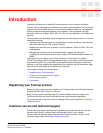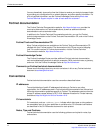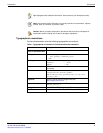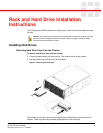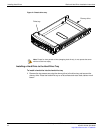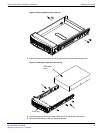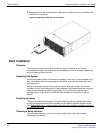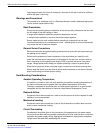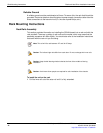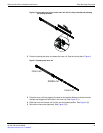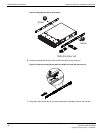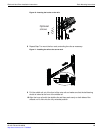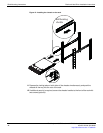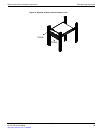
Rack and Hard Drive Installation Instructions Rack Installation
FortiAnalyzer-4000B Version 4.0 MR2 Rack and Hardware Install Guide
05-420-126194-20100608 9
http://docs.fortinet.com/ • Feedback
Leave approximately 30 inches of clearance in the back of the rack to allow for sufficient
airflow and ease in servicing.
Warnings and Precautions!
This product is for installation only in a Restricted Access Location (dedicated equipment
rooms, service closets and the like).
Rack Precautions
Ensure that the leveling jacks on the bottom of the rack are fully extended to the floor with
the full weight of the rack resting on them.
In single rack installation, stabilizers should be attached to the rack.
In multiple rack installations, the racks should be coupled together.
Always make sure the rack is stable before extending a component from the rack.
You should extend only one component at a time - extending two or more simultaneously
may cause the rack to become unstable.
General Server Precautions
Review the electrical and general safety precautions that came with the components you
are adding to your chassis.
Determine the placement of each component in the rack before you install the rails.
Install the heaviest server components on the bottom of the rack first, and then work up.
Use a regulating uninterruptible power supply (UPS) to protect the server from power
surges, voltage spikes and to keep your system operating in case of a power failure.
Allow the hot plug hard drives and power supply modules to cool before touching them.
Always keep the rack's front door and all panels and components on the servers closed
when not servicing to maintain proper cooling.
Rack Mounting Considerations
Ambient Operating Temperature
If installed in a closed or multi-unit rack assembly, the ambient operating temperature of
the rack environment may be greater than the ambient temperature of the room.
Therefore, consideration should be given to installing the equipment in an environment
compatible with the manufacturer’s maximum rated ambient temperature (Tmra).
Reduced Airflow
Equipment should be mounted into a rack so that the amount of airflow required for safe
operation is not compromised.
Mechanical Loading
Equipment should be mounted into a rack so that a hazardous condition does not arise
due to uneven mechanical loading.
Circuit Overloading
Consideration should be given to the connection of the equipment to the power supply
circuitry and the effect that any possible overloading of circuits might have on overcurrent
protection and power supply wiring. Appropriate consideration of equipment nameplate
ratings should be used when addressing this concern.



